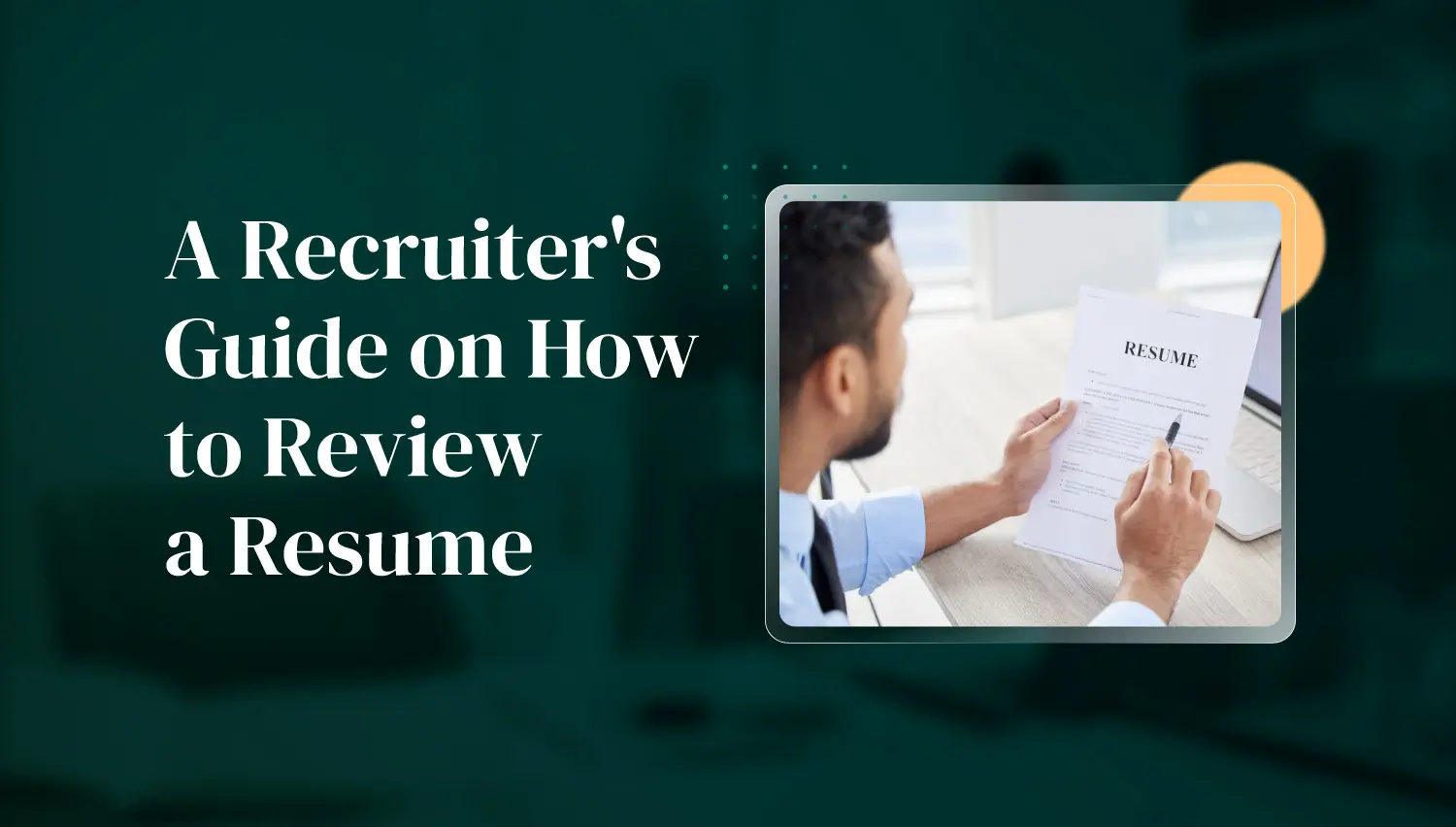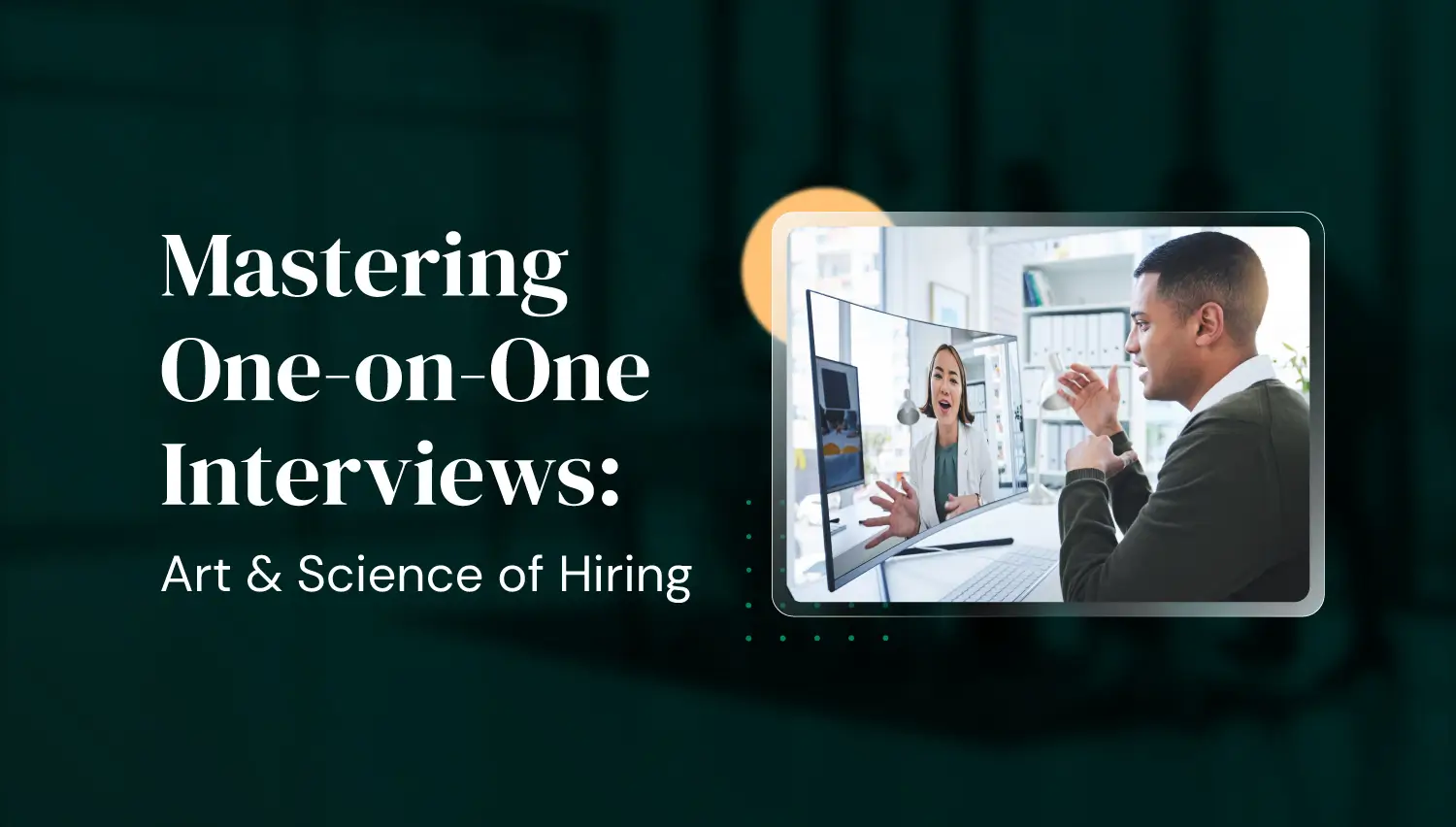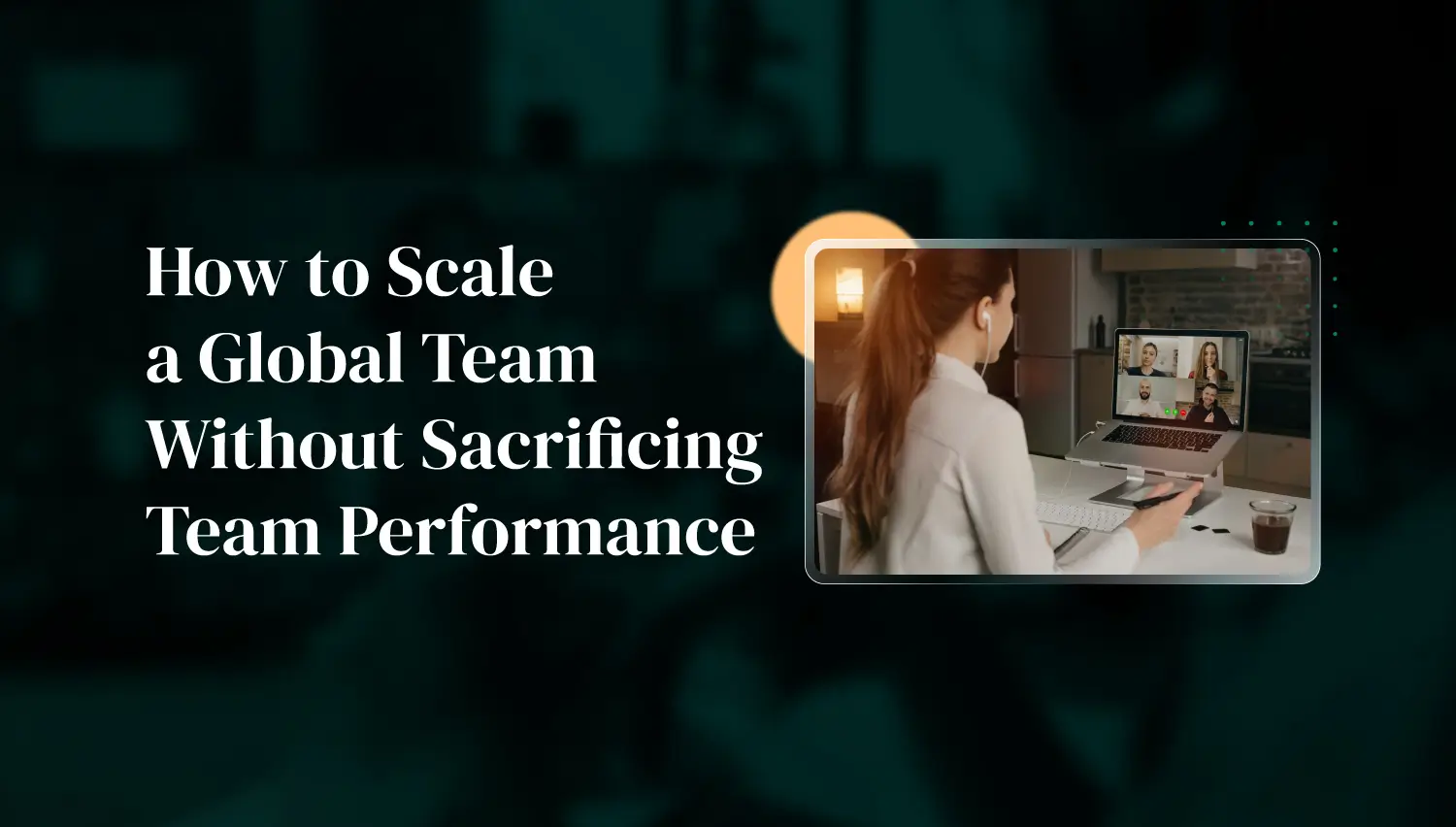I'll never forget the time I almost overlooked one of the best hires I ever made.
His resume landed in my inbox, buried among dozens of others. Plain format, modest job titles, nothing flashy. But one bullet point caught my eye: a small project that had saved his previous company nearly half a million dollars. It was a reminder that great talent doesn't always arrive gift-wrapped and why learning how to properly review a resume is one of the most crucial skills any hiring manager or recruiter can develop.
Whether you're building a lean startup team or hiring at scale for a global enterprise, resumes remain the first (and sometimes only) opportunity to spot the signals that separate average candidates from exceptional ones. Done poorly, resume reviews waste time and let top talent slip through the cracks. Done well, they're the foundation of hiring decisions that shape the future of your business.
In this guide, I'll walk you through how to review a resume efficiently and effectively. From scanning for red flags to digging into the details that reveal true impact, this is the process I rely on and that has helped me place hundreds of professionals in roles where they thrive.
The Importance of Resume Review
In recruitment, time is always in short supply. It's tempting to rush through resume stacks, especially when you're juggling dozens of open roles. But here's the hard truth: your hiring decisions can only be as good as the information you extract from those resumes.
Studies show recruiters spend an average of just 6–8 seconds on an initial resume scan. That's barely enough time to spot a name, a few keywords, and maybe a job title or two. Yet within those seconds, critical judgments are formed, often deciding who makes it to the next round and who doesn't.
This is why knowing how to review a resume properly is so essential. A structured, consistent approach helps you not only move faster but also surface candidates who might otherwise be overlooked. It reduces bias, ensures alignment with hiring managers, and ultimately increases your odds of making successful, long-term placements.
When I'm working with clients who are struggling to hire, one of the first things I examine is their screening process. Nine times out of ten, the problem isn't a lack of talent in the pipeline – it's how resumes are being evaluated.
Preparing for Resume Review
Before you open a single resume, you need a clear plan. Diving into a stack of resumes without preparation is like trying to navigate a new city without a map. You'll waste time, get frustrated, and probably miss what you're looking for.
The job description is your north star. Too many hiring managers and recruiters skim it or treat it like a formality, but it's the blueprint for identifying qualified candidates. Look beyond the bullet points and really dig into:
- Core responsibilities: What is this role truly accountable for?
- Must-have skills: Which skills or experiences are non-negotiable?
- Soft skills and culture fit: What traits would help someone thrive in this team or company?
I often highlight or annotate the job description, pulling out keywords and themes that I want to see reflected in resumes. This makes it easier to spot alignment (or gaps) quickly.
Next, keep in mind that not every requirement listed in a job description deserves equal weight. You'll save yourself enormous time and indecision if you distinguish between:
- Must-haves: Skills, experiences, or qualifications that are absolutely required for success in the role.
- Nice-to-haves: Additional skills or traits that would be valuable but aren't dealbreakers.
When I was hiring a technical project manager for a startup, "experience with SaaS platforms" was a must-have, but "certification in Agile" was a nice-to-have. Defining this upfront prevented me from disqualifying otherwise strong candidates who simply hadn't pursued that specific credential.
Preparing this way helps you review resumes faster and more objectively. It ensures you're evaluating candidates on what truly matters for the role, not on superficial factors or personal biases.
Initial Scan: The 6-Second Test
Let's be honest, most resumes get only a few seconds of attention at first glance. That's not because recruiters are careless; it's because the volume of applications demands speed. The goal of the initial scan isn't to make a final decision; it's to quickly sort resumes into three buckets: promising, maybe, and no.
Check for Clarity and Readability
First impressions count. A resume should be easy to read, visually clean, and logically structured. When I do an initial scan, I'm looking for:
- Clear section headings
- Consistent formatting
- Reasonable use of white space
- Fonts that are professional and legible
If I have to squint to read someone's resume or hunt around to find the work history, it's an immediate red flag. Great candidates often take care in how they present themselves on paper, and that attention to detail matters.
Assess Overall Impression
Beyond layout, I'm scanning for quick signals of relevance. Do the job titles align with the role I'm filling? Are there keywords that match my must-haves from the job description? Does the resume look tailored for this role, or like a generic document blasted out to dozens of employers?
One time, I came across a resume where the candidate's most recent title was "Operations Ninja." It was cute, but nowhere in the resume did it explain the real responsibilities behind that title. If I can't tell what someone actually did, they're likely going in the "maybe" pile at best.
The six-second test doesn't replace a deeper review, but it helps you manage your time and keep your process efficient. It's the difference between drowning in resumes and moving forward with the best possible candidates.

Detailed Review: Section by Section
Once a resume passes the initial scan, it's time to dig deeper. A systematic, section-by-section review ensures you don't miss crucial details or overlook hidden gems. Here's how I approach it:
Contact Information
This may sound basic, but you'd be surprised how often contact details are missing, outdated, or unprofessional. Check for:
- A professional email address (e.g., john.doe@gmail.com, not partyanimal1995@…)
- Accurate phone number
- LinkedIn profile or personal website, if relevant
Professional Summary
A strong summary acts as a trailer for the candidate's story. I'm looking for a concise snapshot that:
- Highlights key skills
- Connects past experience to future goals
- Uses language tailored to the job or industry
When the summary reads like a generic statement ("Motivated professional seeking new opportunities"), it's a red flag that the resume might be generic too.
Work Experience
This section is the backbone of the resume. I dig in to assess:
- Relevance to the target role
- Progression and growth over time
- Impact, ideally backed by numbers (e.g., "Increased sales by 30%," "Reduced churn by 15%")
I've learned to pay attention to context. Two candidates may both list "Project Manager," but their responsibilities (and level of impact) could be worlds apart.
Education
The importance of education varies by role. For technical or regulated fields, degrees and certifications can be crucial. For others, practical experience often carries more weight. Still, it's wise to confirm:
- Degree earned
- Relevant coursework (especially for early-career candidates)
- Institution reputation, if it's relevant to the role or industry
Skills and Certifications
This is where I check for alignment with the job description. I'm not just scanning for buzzwords, I'm looking for evidence that the candidate truly possesses these skills. For instance, if someone lists "SQL," I'll glance at their work experience to see how they've actually used it.
A resume that simply lists skills without context always leaves me skeptical.
A detailed review like this ensures that decisions aren't based on gut feeling alone. It's how you separate candidates who "look good on paper" from those who can truly deliver on the job.
Identifying Red Flags
Even the strongest resumes can hide warning signs beneath a polished surface. Knowing how to spot candidate red flags is crucial for avoiding costly hiring mistakes. Over the years, these are the patterns I've learned to watch for and how I approach them:
Employment Gaps
Gaps in employment aren't always a dealbreaker, especially post-pandemic, but they deserve attention. I look for:
- Explanations in the resume or cover letter
- Signs the candidate stayed professionally engaged (freelance work, certifications, volunteering)
A gap without context makes me pause, but I never assume the worst until I've asked questions during an interview.
Frequent Job Changes
Job-hopping is more common these days, but there's a difference between healthy career growth and a pattern of instability. I consider:
- The reasons for each move
- Whether the candidate advanced in responsibility or title
- Industry norms (tech, for example, often sees shorter tenures)
For example, let's say you get a candidate who'd held five jobs in six years, but each move was a clear step up in responsibility. Context matters.
Lack of Quantifiable Achievements
If someone's entire work history is described in vague terms, "responsible for projects," "worked with teams," it's a red flag. I look for:
- Numbers that show impact
- Specifics about scope, budget, or outcomes
Concrete details signal real contributions. Generic language often signals either a lack of results or someone who doesn't know how to articulate their value.
Generic Language
Phrases like "hard worker," "team player," or "results-driven" are filler unless backed up by examples. I'm cautious when resumes read like they were copied from a template without tailoring to the specific role or industry.
If you see a resume that lists 20 skills but contains almost no detail about how those skills were applied, it's an immediate cause for a deeper probe.
Identifying red flags isn't about eliminating candidates prematurely; it's about knowing which areas to explore further during interviews. A resume alone rarely tells the whole story, but the clues it provides are invaluable for steering your conversations in the right direction.
Leveraging Technology in Resume Review
Technology has completely transformed how we review resumes. While there's no substitute for human judgment, the right tools can help you screen faster, reduce bias, and ensure you're not missing out on great talent hiding in your pipeline.
Applicant Tracking Systems
If you're hiring at any kind of scale, you're probably using an Applicant Tracking System (ATS). These platforms help you:
- Organize and store candidate resumes
- Search for keywords tied to your job descriptions
- Track candidates through various stages of the hiring process
But there's a catch. ATS software often relies on exact keyword matches. A fantastic candidate might get filtered out simply because they used slightly different wording. That's why it's crucial to:
- Build well-crafted job descriptions with the right keywords
- Search for synonyms or related terms during your ATS queries
- Always manually review borderline applications instead of relying purely on automated scores
Resume Parsing Tools
Resume parsing tools extract information from resumes and convert it into structured data. They're great for:
- Quickly analyzing large volumes of resumes
- Identifying candidates with specific skills or experiences
- Speeding up the screening process
However, parsers can misread certain resume formats, particularly if the design is too complex or creative. I recommend:
- Testing your parsing software with a few sample resumes
- Advising candidates to submit resumes in simple, ATS-friendly formats (e.g., Word or PDF without fancy graphics)
When used wisely, these tools are powerful allies. They help you focus your time where it matters most: evaluating candidates' potential and cultural fit.
Technology can make your screening process vastly more efficient, but it's only as good as the strategy behind it. Combining tech with thoughtful human review is the best way to ensure you're identifying the right talent for your roles.

Best Practices for Efficient Resume Screening
A resume review process doesn't have to be overwhelming. Over the years, I've learned that consistency and collaboration are what separate efficient screening from chaotic guesswork. Here's how to keep your process sharp and effective.
Develop a Standardized Checklist
One of the biggest mistakes recruiters and hiring managers make is relying purely on gut instinct. While instincts have their place, a standardized checklist helps ensure:
- Every candidate is evaluated against the same criteria
- You're not missing crucial details under time pressure
- Biases are minimized in the screening process
My personal checklist often includes basics like clarity and formatting, but also role-specific elements, such as key technologies for a developer or revenue ownership for a sales role. It's a living document I update regularly based on hiring results.
Collaborate with Hiring Teams
Great resume reviews don't happen in a vacuum. Before you start screening, align with the hiring manager or stakeholders on:
- Must-have vs. nice-to-have skills
- Red flags to watch out for
- Any unique context about the role or team
I've found that even a 15-minute calibration meeting saves hours later. It prevents me from shortlisting candidates who look great on paper but miss crucial traits the team values.
Keep on Improving the Process
No process is perfect forever. The market changes, job roles evolve, and candidate expectations shift. Make it a habit to:
- Review your screening results after every hire
- Ask hiring managers for feedback on shortlisted candidates
- Update your checklists and criteria based on real-world outcomes
I once thought a certain certification was essential for a tech role, until multiple successful hires proved it was merely a nice-to-have. Learning from each search makes your future screenings smarter and faster.
By applying these best practices, you transform resume review from a tedious chore into a strategic advantage. The goal is simple: spend less time sifting through resumes and more time engaging the candidates who can genuinely move your business forward.
Ready to Find the Talent Others Miss?
Reviewing resumes the right way is a game-changer. It's how you uncover candidates who don't just fit the job description, but elevate your business. Yet even with a solid screening process, the reality is that hiring takes time, focus, and experience, which most busy teams don't always have to spare.
That's where partners like Somewhere come in. Our team specializes in helping companies build world-class teams, no matter where those teams happen to be. We're experts at spotting the difference between a good candidate and the right one, and we know how to sift through talent pools worldwide to bring exceptional people to your shortlist.
If you're ready to save time, reduce hiring risk, and discover talent others overlook, let's talk. Fill out the contact form below, and find out how Somewhere can help you review resumes and hire with confidence.














